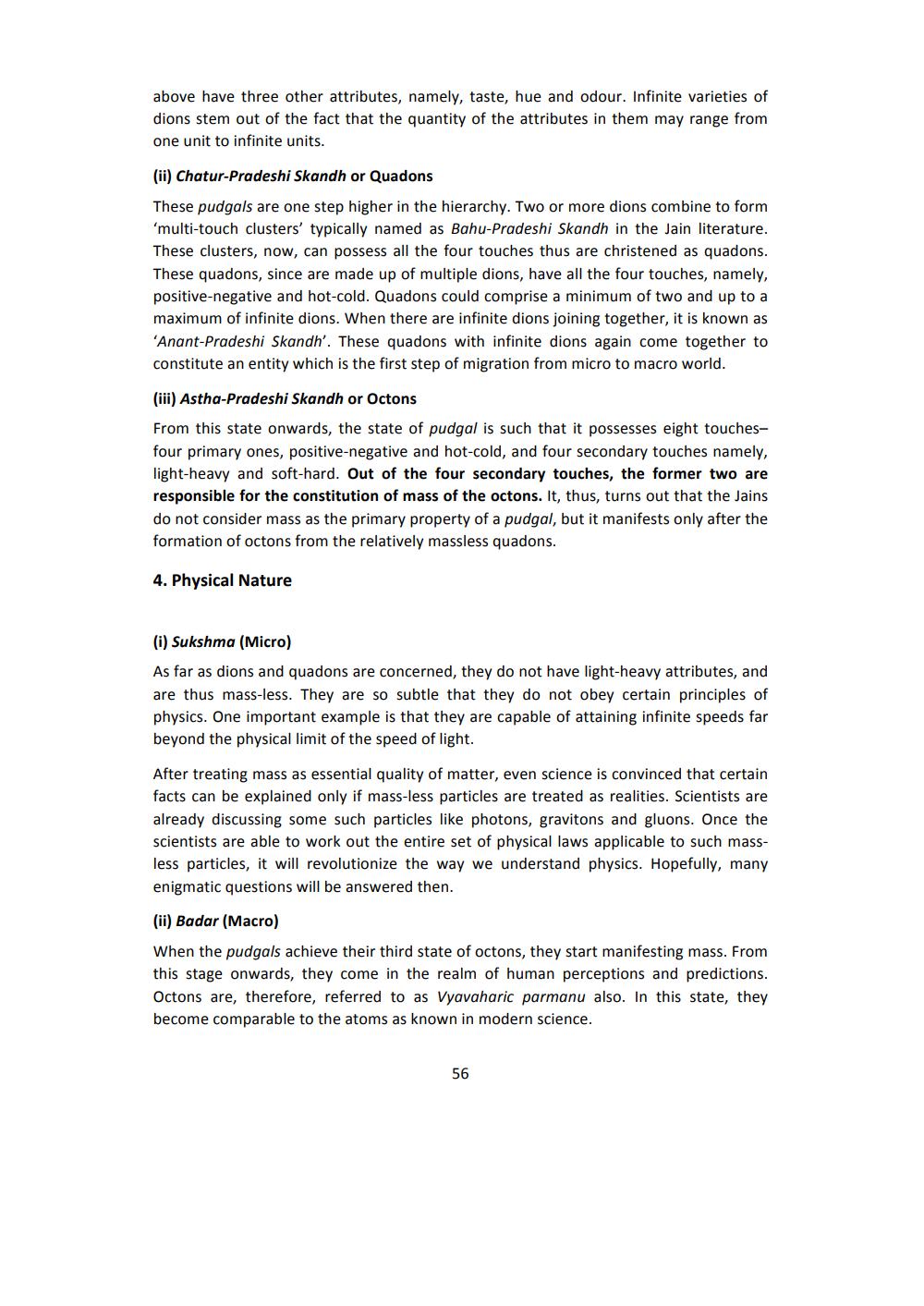________________
above have three other attributes, namely, taste, hue and odour. Infinite varieties of dions stem out of the fact that the quantity of the attributes in them may range from one unit to infinite units.
(ii) Chatur-Pradeshi Skandh or Quadons These pudgals are one step higher in the hierarchy. Two or more dions combine to form 'multi-touch clusters' typically named as Bahu-Pradeshi Skandh in the Jain literature. These clusters, now, can possess all the four touches thus are christened as quadons. These quadons, since are made up of multiple dions, have all the four touches, namely, positive-negative and hot-cold. Quadons could comprise a minimum of two and up to a maximum of infinite dions. When there are infinite dions joining together, it is known as 'Anant-Pradeshi Skandh'. These quadons with infinite dions again come together to constitute an entity which is the first step of migration from micro to macro world.
(iii) Astha-Pradeshi Skandh or Octons From this state onwards, the state of pudgal is such that it possesses eight touchesfour primary ones, positive negative and hot-cold, and four secondary touches namely, light-heavy and soft-hard. Out of the four secondary touches, the former two are responsible for the constitution of mass of the octons. It, thus, turns out that the Jains do not consider mass as the primary property of a pudgal, but it manifests only after the formation of octons from the relatively massless quadons.
4. Physical Nature
(i) Sukshma (Micro) As far as dions and quadons are concerned, they do not have light-heavy attributes, and are thus mass-less. They are so subtle that they do not obey certain principles of physics. One important example is that they are capable of attaining infinite speeds far beyond the physical limit of the speed of light.
After treating mass as essential quality of matter, even science is convinced that certain facts can be explained only if mass-less particles are treated as realities. Scientists are already discussing some such particles like photons, gravitons and gluons. Once the scientists are able to work out the entire set of physical laws applicable to such massless particles, it will revolutionize the way we understand physics. Hopefully, many enigmatic questions will be answered then.
(ii) Badar (Macro) When the pudgals achieve their third state of octons, they start manifesting mass. From this stage onwards, they come in the realm of human perceptions and predictions. Octons are, therefore, referred to as Vyavaharic parmanu also. In this state, they become comparable to the atoms as known in modern science.
56




